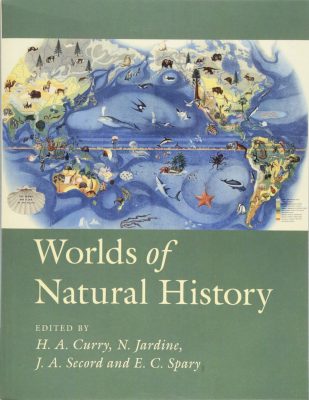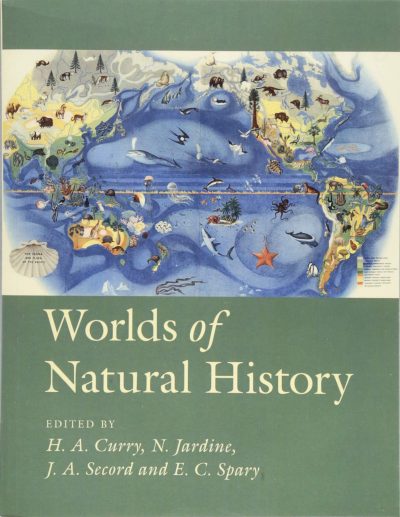 Editors: H.A. Curry, N. Jardine, J.A. Secord, and E.C. Spary
Editors: H.A. Curry, N. Jardine, J.A. Secord, and E.C. Spary
Publisher: Cambridge University Press – 656 pages
Book Review by: Sonu Chandiram
This volume is a history of nature from the sixteenth century to the present. To quote the editors, “from Aztec accounts of hibernating hummingbirds to contemporary television spectaculars, human encounters with nature have long sparked wonder, curiosity and delight.”
Thirty-four specialists in various aspects of natural history and science hailing from 11 countries – Austria, Brazil, Canada, Germany Holland, Hungary, Italy, South Korea, Spain, the United Kingdom, and United States – wrote the 32 chapters of this book. They are curators of museums, literary scholars, historians of art, the environment, and science.
This third (2019) printing is an update of the original 2018 edition. It is divided into four Parts as shown below, to provide you an overview of what is covered and discussed in this book:
Introduction – Worlds of History
- Early Modern Ventures
- Visions of ancient natural history
- Gessner’s history of nature
- Natural history of the apothecary’s shop
- Horticultural networking and sociable citation
- European exchanges and communities
- Making monsters
- Indigenous naturalists
- Insects, philosophy and the microscope
- Enlightened Orders
- The materialists of natural history
- Experimental natural history
- Spatial arrangement and systematic order
- Linnaean paper tools
- Image and nature
- Botanical conquistadors
- Bird sellers and animal merchants
- Vegetable empire
- Publics and Empires
- Containers and collections
- Natural history and the scientific voyage
- Humboldt’s exploration at a distance
- Publics and practices
- Museum nature
- Peopling natural history
- The oils of empire
- Connecting and conserving
- Global geology and tectonics of empire
- Zoological gardens
- Provincializing global botany
- Descriptive and prescriptive taxonomies
- Imperiled crops and endangered flowers
- Networks of natural history in Latin America
- The unnatural history of human biology
- Fieldwork out of place
- Wild visitors
Epilogue
Natural history and its histories in the twenty-first century
Beyond what we list above, this book covers a wide range of subjects and objects, flora and fauna. Pictures speak volumes, as they say, so we urge you to see the set of color images presented between pages 286 and 287. They are highly enlightening and informative:
- A drawing of a parrot from Brazil
- Another drawing of a parrot that Gessner named Erythroxanthum
- One of the earliest known drawings of the American tomato
- Drawing of the Mediterranean mullus barbatus (red mullet) by an anonymous painter
- A portal onto Mexica ritual life and historical record
- Tony larvae on wollen cloth
- Two drawings of the plant named shooting star (Gotterblume) by Georg Dionysius Ehret
- ‘Heliconia’, tempera on paper, 54 x 38 cm.
- Oil painting depicting human feeding a parrot in the kitchen of a wealthy burgher’s home
- Volumes made from the xylothek made in Nurnberg, Germany in the 1820s.
- Loose seaweed specimens in a folder named Delasaria
- Elephant-gate, Berlin Zoo, 1904 postcard
- Concert salon, Berlin Zoo, 1904 postcard
- Conus cytospera (Melvill and Standen, 1899)
- Colonial and Indian Expedition Daily Programme (London, 1866)
- Large textile map measuring 300 x 176 cm. painted by a Burmese artist around 1860
- Hypothetical map assuming a single origin for the distribution of humans from the sunken continent Lemuria
- Specimens of Zoological Collection, MASMO 4524, National Collection of Birds, Ciudad Universitaria, Mexico City
- Albatross movements off the Ecuadorian coast mapped in relation to ocean net primary productivity and chlorophyll levels as measured in the 2010s
- David Attenborough tussles with mountain gorillas on location in Rwanda during filming for the BBC series Life on Earth (1979)
This book has been written for newcomers as well as established researchers and scientists. It is authoritative, educational, and actually, quite enjoyable.
Editors:
H.A. Curry is the Peter Lipton Senior Lecturer in the History of Modern Science and technology at the University of Cambridge.
Jardine is emeritus Professor of History and Philosophy of the Sciences at the University of Cambridge
J.A. Secord is Professor of History and Philosophy of the Sciences at the University of Cambridge.
E.C. Spary is Reader in the History of Modern European Knowledge at the Faculty of History at the University f Cambridge







